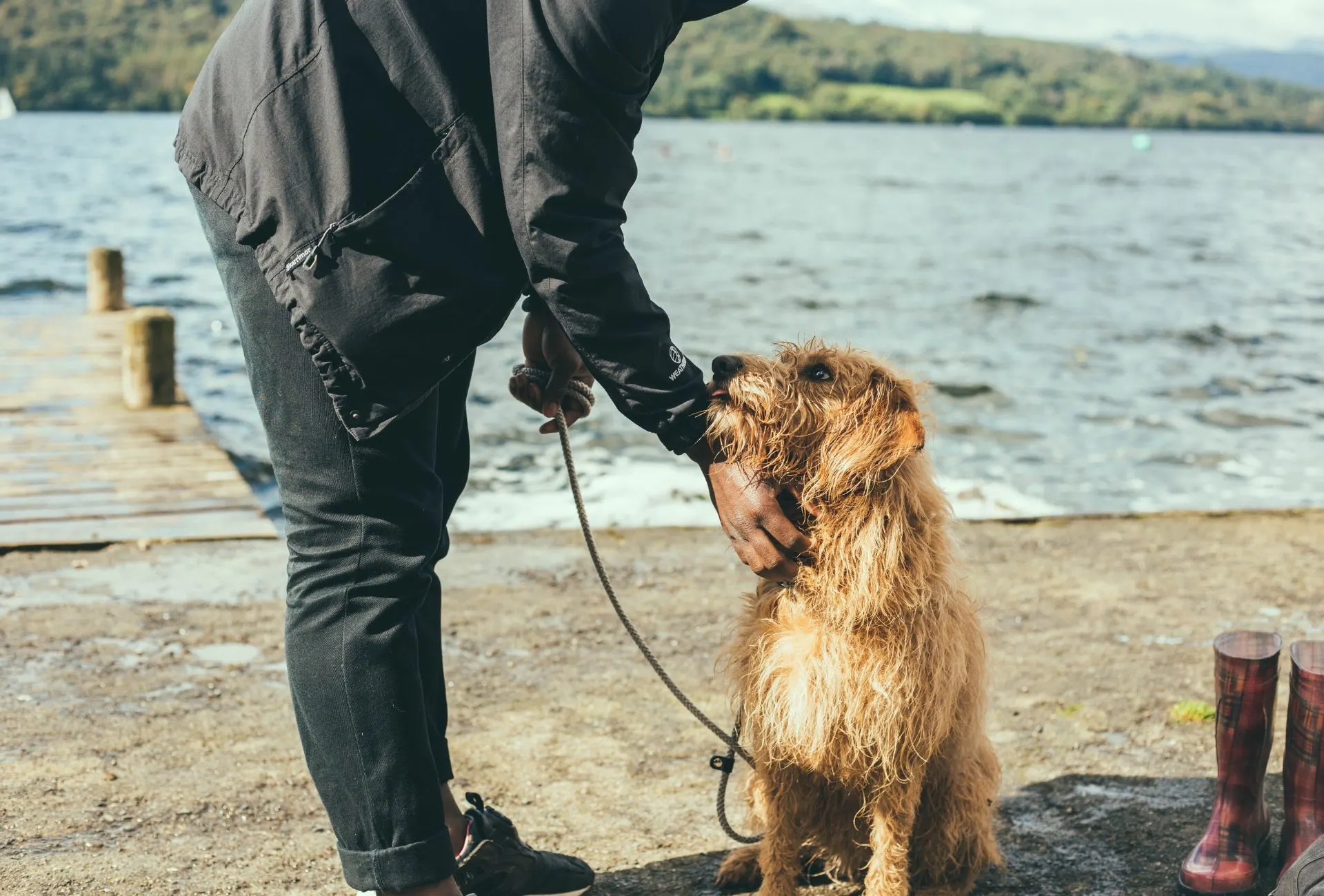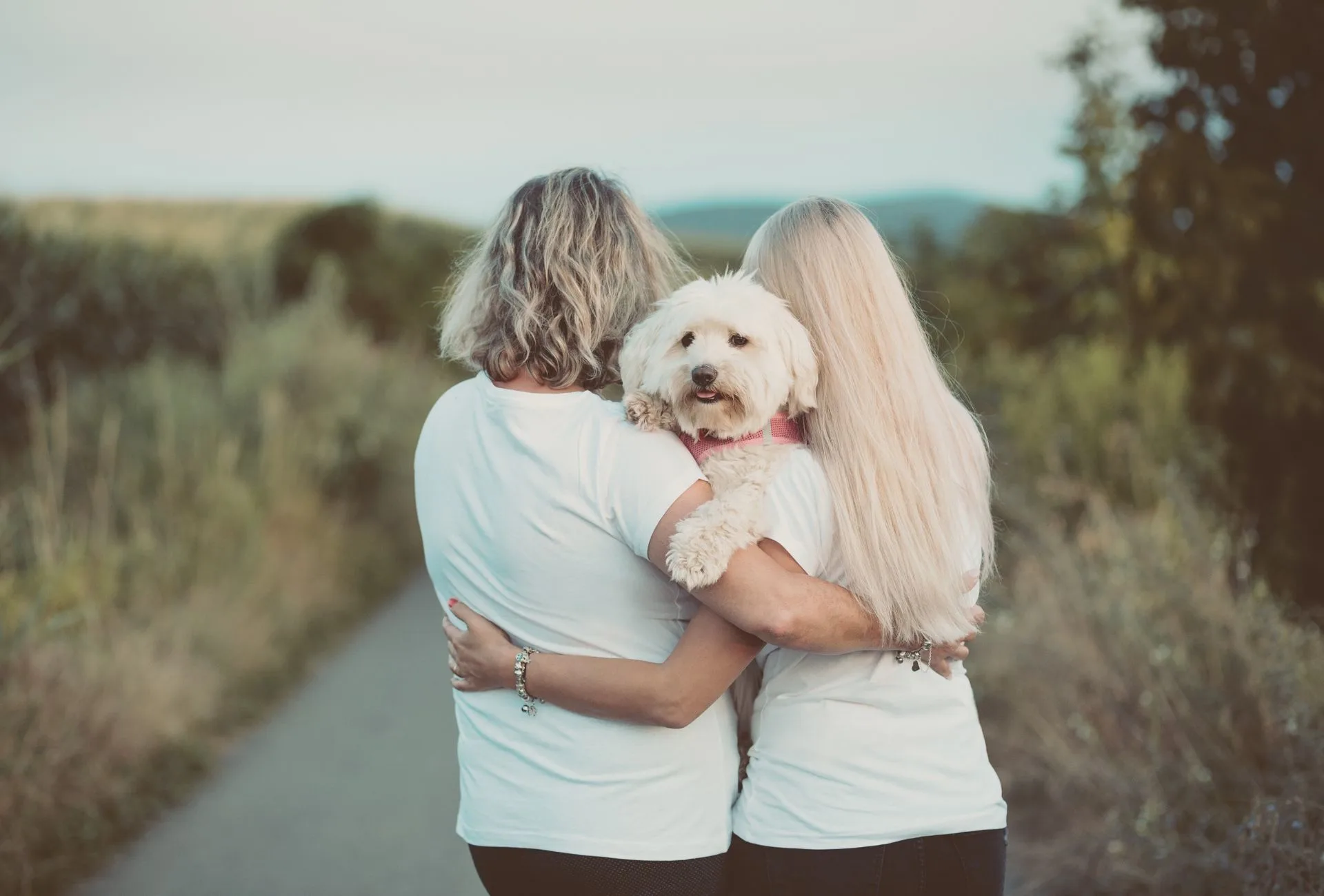[ad_1]
If you have ever had the pleasure of sharing your life with a dog, you have likely marveled at the remarkable bond that can develop between humans and their four-legged companions.
This unique connection often transcends companionship, forming a bond that feels deep and enduring.
But what happens when a dog finds himself in a home with not just one, but two loving owners?
Can dogs extend their affection and devotion to more than a single human counterpart?
I recently thought about whether my dog has a favorite person or if she can equally divide her affection between my boyfriend and me.
We both take care of her, play with her, and spend most of our time together.
She seeks out his attention as much as mine so that would mean that she must have bonded with two owners, right?
Let’s find out!
Dogs Can Bond With Two Owners
Dogs are inherently social creatures, coming from an ancient line of pack animals.
It’s this inherent social drive that enables dogs to embrace not only their primary owners but also secondary caregivers and family members.
So yes dogs can bond with two owners or multiple people in their life. They are capable of forming strong attachments to multiple individuals that provide them with love and care.
These attachments can be divided into primary bonds and secondary bonds.
The primary bond typically develops with the individual who provides the most care and attention, but secondary bonds can also be strong and meaningful.

Early experiences play a significant role in shaping a dog’s capacity to bond with their owners.
The socialization period during puppyhood sets the stage for their future relationships.
Puppies exposed to a diverse range of people, environments, and experiences are more likely to grow up into adaptable dogs capable of forming strong bonds with various individuals.
Dogs that have experienced negative interactions with humans might not be as open to relationships with their owners in general.
They might need more time warming up with their new person which I have outlined in my article Phases of a Rescue Dog – 3 Stages You Need To Know.
A well-socialized dog is way more comfortable and ready to interact and bond with humans.
Whether that bond is equally strong between the dog and his two owners depends on how much quality time is spent between them.
In a household with two owners, harmony is key to a dog’s well-being.
To ensure a harmonious environment for your dog, focus on:
- Open Communication: All owners in the household should openly communicate with each other. Discuss routines, training methods, and expectations to ensure consistency.
- Unified Training: Use the same training techniques and commands to prevent confusion for your dog and reinforce their training.
- Equal Affection: While dogs may have preferences, ensure that all owners provide love and affection. Avoid favoritism to maintain a balanced bond.
- Balanced Rules: Establish consistent rules and boundaries. When everyone is on the same page, your dog feels secure and confident.
Can Dogs Change Their Favorite Person?
Even if a dog has bonded with two owners, he might still have a favorite person to whom he shows the most excitement and affection.
However dogs, like people, are dynamic beings with evolving needs and preferences.
Their formed bonds are not rigid but rather shaped by their experiences, interactions, and changing circumstances.
It can happen that your dog might change his favorite person over time for a variety of reasons, including changes in the amount of time spent with different family members, shifts in routine, new positive experiences with specific individuals, or changes in the dog’s own personality as he matures.

Changing Dynamics in the Household
One of the most common reasons for a shift in your dog’s preferences is changes in the household dynamics.
Dogs are highly attuned to changes in their environment and usually thrive on routines and schedules.
If a new family member moves in or one passes away, the structure of the household is changed which can also cause a change in your dog’s preferences.
A shift in household dynamics can also involve different routines or daily activities.
One family member might have accepted a new job position and is now unable to spend as much time with their pet as they have done in the past.
Quality Time
Dogs are social animals and their favorite person might just be the one who spends the most time with them or provides the most engaging experience.
If someone else in the household starts taking the dog for fun walks, playing games, or offering treats and affection, your dog is likely to form a connection with that individual.
Quality is really important here and dogs, just like children, enjoy undivided attention the most.
Age and Life Stages
Dogs’ needs and preferences change over time as they age.
A dog that was once attached to a specific family member may shift their preference as they grow older and their requirements change.
Puppies, for instance, often form strong bonds with their primary caregiver, but this can evolve as they mature.
Positive Reinforcement
When you think about your favorite person, you probably think about somebody who makes you feel loved, safe, and comfortable and who you have many positive memories with.
Dogs are no different and are more likely to gravitate towards a person who provides them with positive experiences, such as treats, belly rubs, or fun playtime.
Continued positive reinforcement can lead to a shift in their favorite person over time.
Health and Care
Most commonly your dog’s primary caregiver will be their favorite person.
The primary caregiver is the one who provides daily care as well as care during illness and discomfort.
Your dog will then associate this person with comfort, soothing, and necessary medical care.
Nurturing a Strong Bond with Your Dog
The cherished companionship between dogs and humans doesn’t happen by chance.
It’s a result of love, time, and effort invested into nurturing that bond.
If you want to build or further strengthen the bond with your dog, focus on the following things:
- Quality Time: Spend quality time together every day. Whether that’s a long walk, an evening cuddle, or a great game of fetch, these moments are very important for your dog.
- Physical and Mental Stimulation: Provide your dog with sufficient physical exercise and mental stimulation throughout the day. This is not only quality time but also keeps your dog happy and healthy.
- Consistency: Show your dog that you are reliable and consistent in your rules and structures to prevent anxiety and frustration.
- Training: Training isn’t just obedience, it’s a tool to promote better communication between the dog and the owner. Well-trained dogs have happier owners and are happier themselves.
- Respect Boundaries: Bonding time doesn’t mean spending every second of the day with your dog. Respect their need for personal space and moments of solitude.
For more guidelines read my article The Right Way to Bond With Your Dog. It’s one of my most important pieces!
Disclaimer: This blog post does not substitute veterinary attention and does not intend to do so. I am not a veterinarian or pet nutritionist. If your dog shows any sign of illness, call your vet.
[ad_2]
Source link
